
Environmental, Economic, and Public Policy and the Oceans
Pollution
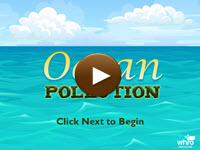 In the late 1800s and early 1900s, the view of many scientists and the general public was that if pollution was not seen, it had no effects. At this time in history, many people felt that “the solution for pollution is dilution.” Water can dissolve many things, but can it erase our waste? View this presentation to learn more about the sources of pollution and its harmful effects on people and the environment. Click the player button to begin.
In the late 1800s and early 1900s, the view of many scientists and the general public was that if pollution was not seen, it had no effects. At this time in history, many people felt that “the solution for pollution is dilution.” Water can dissolve many things, but can it erase our waste? View this presentation to learn more about the sources of pollution and its harmful effects on people and the environment. Click the player button to begin.
View a printable version of the interactivity.
Managing Ocean Resources
With over seven billion people on Earth, there is an enormous and ever-increasing demand on the oceans to provide food. This prompts mankind to harvest the ocean worldwide for its fish and shellfish. There is no governing body to set and enforce limits on ocean fishing, and while some nations have laws or follow international treaties that promote stewardship and sustainable harvesting practices, others do not.
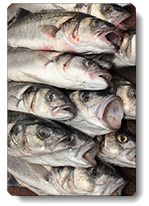 Every action has a consequence, and harvesting fish is no exception, as seen in the statistics below:
Every action has a consequence, and harvesting fish is no exception, as seen in the statistics below:
- The fishing catch worldwide has been increasing since the 1950s. In 1960, approximately 21 million tons of fish were harvested. This industry’s harvest has increased to over 80 million tons per year according to the Food and Agriculture Organization of the United Nations.
- The Food and Agriculture Organization of the United Nations estimates that the maximum catch from the ocean can be 120 million metric tons.
- Did you know that commercial fishing is one of the most dangerous jobs? According to the Centers for Disease Control and Prevention, on average there are 128 deaths for every 100,000 commercial fishing employees.
- Of all human activities, overfishing has had the greatest impact on the ocean's ecosystem.
In areas around the world, the fish stock is at risk of being overfished, or being fished more heavily than the ecosystem can bear at that location. Ideally, it is best to maintain sustainable fish stocks, where the fish population does not decline over a period of time because of fishing practices. Regulations and international cooperation are necessary to meet these goals. While laws limiting fishing would certainly affect the ability of many people around the world to earn a living, the collapse and possible extinction of many species of fish due to overfishing would certainly harm both national economies and natural ecosystems.
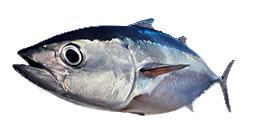 The Pacific bluefin tuna, like the one shown in the image, is a severely overfished but highly valuable catch. Scientists estimate their population has decreased by 96.4 percent due to overfishing. One of these tuna, weighing in at 489 pounds, was sold at auction for a record 1.78 million dollars in Japan in January 2013. Only international cooperation will protect species such as the Pacific bluefin tuna from extinction.
The Pacific bluefin tuna, like the one shown in the image, is a severely overfished but highly valuable catch. Scientists estimate their population has decreased by 96.4 percent due to overfishing. One of these tuna, weighing in at 489 pounds, was sold at auction for a record 1.78 million dollars in Japan in January 2013. Only international cooperation will protect species such as the Pacific bluefin tuna from extinction.
Marine Protected Areas
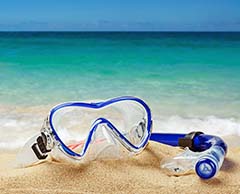 Marine protected areas are created in an effort to help preserve the ocean from human activities like pollution and overfishing. The management of marine sanctuaries helps to protect life, improve fishing in nearby areas, and provide amazing underwater laboratories for scientists to study. Some marine protected areas also provide places of recreation, such as snorkeling, diving, and other water sports that are compatible with the regulations in that protected area. Such protected areas help to ensure that part of the ocean and areas around it are preserved for future generations. A large international collection of marine protected areas would help protect some of the ocean’s most vulnerable species.
Marine protected areas are created in an effort to help preserve the ocean from human activities like pollution and overfishing. The management of marine sanctuaries helps to protect life, improve fishing in nearby areas, and provide amazing underwater laboratories for scientists to study. Some marine protected areas also provide places of recreation, such as snorkeling, diving, and other water sports that are compatible with the regulations in that protected area. Such protected areas help to ensure that part of the ocean and areas around it are preserved for future generations. A large international collection of marine protected areas would help protect some of the ocean’s most vulnerable species.
There are marine sanctuaries around the world, and the National Oceanic and Atmospheric Administration is responsible for managing the fourteen marine protected areas in the United States.
Explore Marine Sanctuaries
![]() Take some time to explore marine sanctuaries in the United States by visiting each of the links below.
Take some time to explore marine sanctuaries in the United States by visiting each of the links below.
- Read more about what constitutes a marine sanctuary and the activities that take place there.
- Find information and view images and video from the fourteen marine protected areas managed by the National Oceanic and Atmospheric Administration.
- See where the fourteen marine protected areas are in the United States.
Not all marine protected areas around the world are perfect. Some areas still allow commercial and sport fishing. Some areas have no monitoring systems to make sure the organisms and environment are preserved; however, saving parts of the oceans for growth and future generations is a step in the direction toward conservation of the ocean, its inhabitants, and its resources.
Oceans and Climate Change
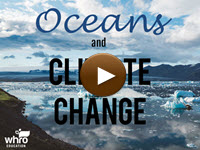 Climate change occurring will have a drastic impact on the coastal areas of the United States, including Coastal Virginia. As the climate becomes warmer, the polar ice caps are melting and increasing the sea level. Sea level rise is not the only impact of climate change. In this interactivity, you will learn about sea level rise and other possible consequences due to climate change. Click the player button to begin.
Climate change occurring will have a drastic impact on the coastal areas of the United States, including Coastal Virginia. As the climate becomes warmer, the polar ice caps are melting and increasing the sea level. Sea level rise is not the only impact of climate change. In this interactivity, you will learn about sea level rise and other possible consequences due to climate change. Click the player button to begin.
View a printable version of the interactivity.
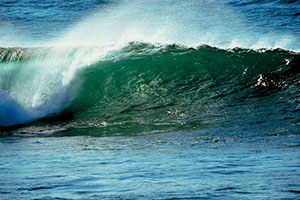 The interconnectedness of Earth’s systems makes it difficult for scientists to predict the exact effects and timeline of these consequences, but there is no question that the climate is changing and affecting the oceans. Taking small individual steps such as conservation, reducing, reusing, and recycling will help protect important natural resources and move humans towards a more sustainable way of life.
The interconnectedness of Earth’s systems makes it difficult for scientists to predict the exact effects and timeline of these consequences, but there is no question that the climate is changing and affecting the oceans. Taking small individual steps such as conservation, reducing, reusing, and recycling will help protect important natural resources and move humans towards a more sustainable way of life.
Environmental, Economic, and Public Policy and the Oceans Review
![]()
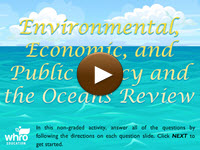 Now that you have explored the environmental, economic, and public policy of the oceans, test your knowledge. In this non-graded interactivity, answer all of the questions by following the directions on each question slide. Click the player button to get started.
Now that you have explored the environmental, economic, and public policy of the oceans, test your knowledge. In this non-graded interactivity, answer all of the questions by following the directions on each question slide. Click the player button to get started.


